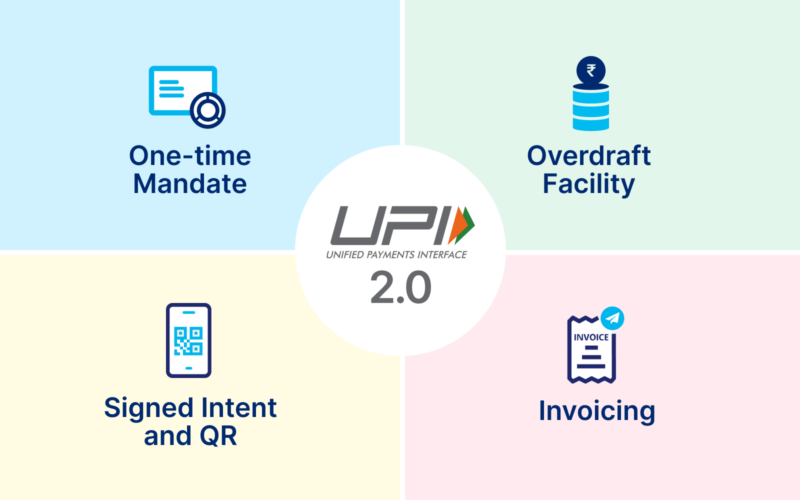With the massive reach and success of UPI (Unified Payments Interface) across India, the introduction of UPI 2.0 is no surprise. On August 16, 2018, NPCI (National Payments Corporation of India) launched UPI 2.0 to introduce a wide range of features under the umbrella of UPI. It is the second iteration of the UPI, which came into force due to the massive acceptance of UPI by banks, third-party players, merchants, and customers.
The MD and CEO of NPCI, Dilip Asbe, reveals that they hope to expand their reach to new milestones, specifically in-person to merchant payment spaces, with UPI 2.0. The new and innovative features of UPI 2.0 is what make this iteration a worthwhile facility for users. In this article, we will unveil all these new features of UPI 2.0 to give you a better hand in accessing its services effectively.
About UPI 2.0
UPI 2.0 redefines the UPI experience of users with its comprehensive features like an overdraft facility, one-time mandate, invoicing, signed intent, and QR facilities. The aim of UPI 2.0 is to steer the nation towards financial inclusivity by leveraging the benefits of its features.
How is UPI 2.0 Different from UPI?
UPI 2.0 is a significant evolution of UPI technology, with notable features and improvements differentiating it from UPI. The signed intent and QR feature of UPI 2.0 makes it more secure for merchants and users than UPI. Even the transaction limit in UPI of ₹1 lakh per transaction is now raised by NPCI in UPI 2.0 to provide users with the flexibility to make transactions above ₹1 lakh. Besides, UPI 2.0 also provides overdraft and invoice facilities, unlike UPI, to allow users to reconcile their transactions easily.
Top 4 New Features of UPI 2.0
UPI 2.0 promises enhanced seamlessness and security. Here are all the features of UPI 2.0 that contribute to a hassle-free payment experience:
- Overdraft Facility
NPCI has announced that UPI 2.0 will allow customers to link their overdraft accounts to UPI. It allows users to make instant transactions from their overdraft accounts and leverage all their associated benefits. By incorporating overdraft accounts into UPI 2.0, NPCI aims to offer additional digital services through which users can conveniently access and manage their overdraft facilities.
- One-Time Mandate
UPI 2.0 introduces a one-time mandate facility that allows customers to pre-authorise transactions and make payments later. During the actual purchase time, the specified amount will be deducted from the customer’s account and received by the merchant or individual user. According to NPCI, the creation and execution of the mandate can be done instantly, ensuring a seamless process, while the merchants will receive the funds on the date of the purchase.
- Invoicing
Having invoices in the box is one of the valuable features of UPI 2.0. The purpose of this feature is to allow customers to review the invoice sent by the merchant before making the payment. Customers can carefully check the amount and other essential details mentioned in the invoice and proceed with the payment. This functionality ensures that customers can verify and validate the invoice before completing the transaction, providing an extra layer of transparency and confidence to the payment process.
- Signed Intent and QR
Signed intent and QR facility enable customers to verify the authenticity of merchants when scanning QR (Quick Response) codes. The user is provided with information that helps determine whether the merchant is a verified UPI merchant. This additional security measure enhances the integrity of QR codes and transaction intent. With the implementation of this feature, transactions can be processed more swiftly, as there is no need to enter the app passcode for signed intent.
Conclusion
The NPCI introduced UPI 2.0 with a view to increasing the financial inclusivity of the country. After UPI, UPI 2.0 aimed to bring users an array of features like an overdraft facility, one-time mandate, invoicing, signed intent, QR, etc. As discussed above, UPI and UPI 2.0 are different because of the additional features that UPI 2.0 offers. Now that you are aware of all these features in detail, you can use them to your benefit and access the seamless interoperability it offers.



